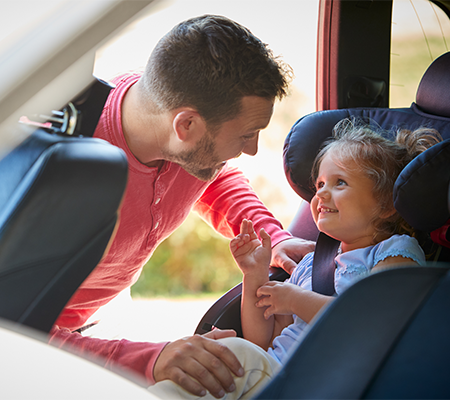A common memory failure has been known to lead to tragic consequences in children. Child hot car deaths and injuries are often misunderstood or disregarded, because people don’t believe it will happen to them.
More than 900 children have died in hot cars since 1998, according to the National Highway Traffic Safety Administration. More than half of the deaths happened because the child was unknowingly left in a car.

The most dangerous mistake a parent, caregiver, loved one or anyone can make is thinking they will never be the one to leave a child alone in a vehicle. A busy day, lack of sleep or even a change in routine can cause anyone to forget their child is still with them in the car.
What’s the harm in leaving a child alone in a car?
“On a 72 degree day, the car can reach 117 degrees in 60 minutes,” said Dr. Jessica Lemke, family medicine provider with Marshfield Clinic Chippewa Falls Center. “Leaving a child in a hot car can lead to dehydration, heat exhaustion, heat cramps, heat stroke and even death.”
Children’s bodies heat up three to five times faster than an adult’s, so a heat stroke can happen when the outside temperature is as low as 57 degrees.
Infants and young children are less effective at thermoregulation than adults. Thermoregulation is the process that allows your body to adapt and counter the effects of extreme heat. Because of this, children are more susceptible to a rapid rise in body temperature when exposed to extreme heat.
Children are also developmentally unable to perform the skills needed to prevent overheating – like drinking water, removing clothing, getting out of their car seat and opening the car door.
If you realize you left your child alone in a car, watch them closely for drowsiness, headaches, a rapid pulse, fever, intense thirst, a lack of urination, nausea, vomiting, breathing faster than normal, muscle aches and muscle spasms, Dr. Lemke shared.
Why is heat stroke so dangerous?
“Heat stroke can affect all body organs and lead to seizures, shock, liver injury, kidney failure, low platelets and, if it’s occurring for a prolonged period of time, can cause death,” said Dr. Lemke. “These organ changes can occur in the hours to even days after heat stroke occurs, so careful monitoring is needed in children who have had heat stroke.”
What to do if your child is left in a car on a hot day
Call 911 immediately. If your child is not responsive, get them out of the car and spray them with cool water or cover with cool rags. Move to a cooler area – such as a shaded area or into an air conditioned building.
If your child is responsive, move to a shaded, cooler area and stay with them until help arrives.
Remembering to take your child out of the car
Never leave a child alone in a car, even for a minute. Busy schedules, lack of sleep and changes in routine can cause anyone to get distracted and forget to take their child out of the car. Setting up a system to check the backseat of your car every time you get out helps trigger your memory to get your child.
“When you have your child in the car seat, put their diaper bag in the passenger seat as a reminder your child is in the car,” Dr. Lemke said. “Or put something in the back you will need once you leave the car – like a phone, purse or even one of your shoes – that way you won’t forget to check the backseat when you arrive at your destination.”
What can you do to protect your child?
Don’t allow your child to play in the car, lock all doors and the trunk after everyone is out of the car and keep the keys out of reach of your child. The second leading cause of hot car deaths in children is because children climbed into unattended vehicles, according to the National Highway Traffic Safety Administration.
If you notice your child is missing, checking the car and the trunk is as important as checking a pool, if you have one.
We’re all capable of having a day when we are distracted
There are many reasons to forget – or think we have already dropped off – our child in the back seat.
“That’s why it’s so important to have extra reminders and safety measures in place to remind us to look in the backseat once our car is stopped,” said Dr. Lemke.






Leave a Reply